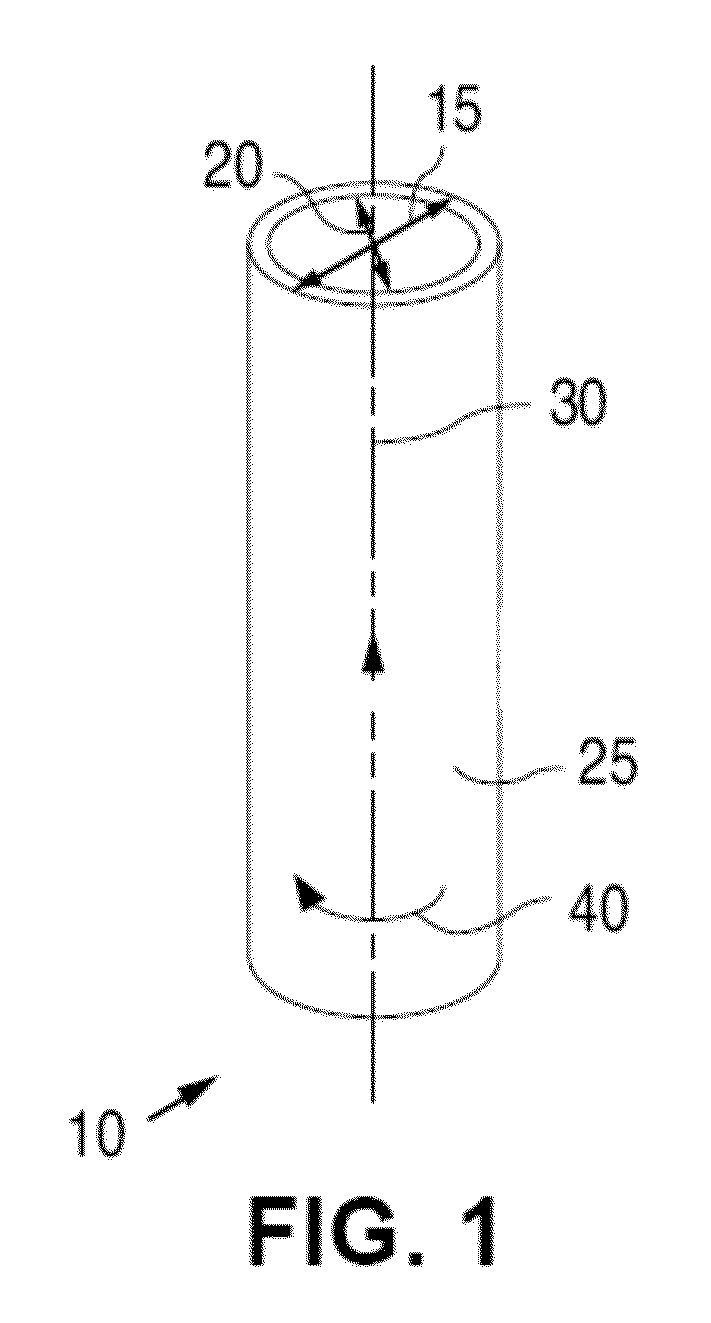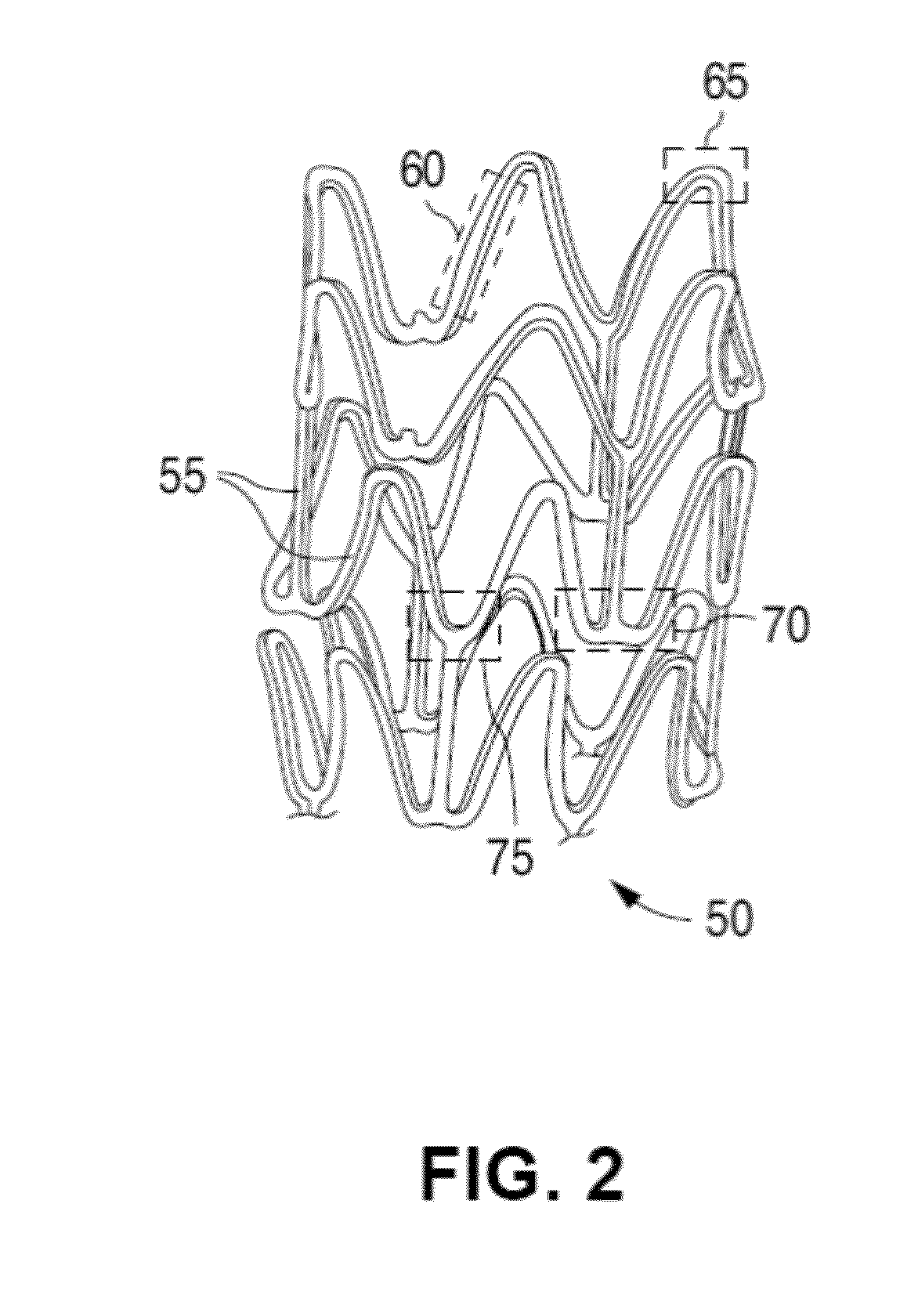Post Electron Beam Stabilization Of Polymeric Medical Devices
a medical device and electron beam technology, applied in the direction of lavatory sanitory, surgery, disinfection, etc., can solve the problems of deterioration of the properties of the polymer, difficulty in treatment, and significant problem of stenosis, so as to reduce the concentration of free radicals, reduce the chemical degradation of the polymer, and increase the decay kinetics of free radicals
- Summary
- Abstract
- Description
- Claims
- Application Information
AI Technical Summary
Benefits of technology
Problems solved by technology
Method used
Image
Examples
example
[0071]The following example illustrates the effect on free radical concentration of exposing stent made from a polymer to a temperature above ambient temperature after sterilization with radiation. The stents used in the study are a scaffolding made from PLLA.
[0072]FIG. 3 and Table 2 depict the relative free radical concentration of the stent with heat treatment and the stent with no heat treatment as a function of time after e-beam sterilization. The relative free radical concentration is the free radical concentration normalized to the initial concentration immediately after e-beam sterilization. The stents in the study were sterilized by e-beam radiation with a dose of 31 kGy. The stents were packaged in a foil pouch (MarvelSeal 360—Nylon / Aluminum / LDPE) made by Oliver-Tolas of Grand Rapids, Mich. The packages were sealed with an argon atmosphere inside.
TABLE 2Relative Free Radical Concentration of stents without andwith heat treatment after e-beam sterilization.No Heat Treatment5...
PUM
| Property | Measurement | Unit |
|---|---|---|
| temperature | aaaaa | aaaaa |
| glass transition temperature | aaaaa | aaaaa |
| diameter | aaaaa | aaaaa |
Abstract
Description
Claims
Application Information
 Login to View More
Login to View More - R&D
- Intellectual Property
- Life Sciences
- Materials
- Tech Scout
- Unparalleled Data Quality
- Higher Quality Content
- 60% Fewer Hallucinations
Browse by: Latest US Patents, China's latest patents, Technical Efficacy Thesaurus, Application Domain, Technology Topic, Popular Technical Reports.
© 2025 PatSnap. All rights reserved.Legal|Privacy policy|Modern Slavery Act Transparency Statement|Sitemap|About US| Contact US: help@patsnap.com



